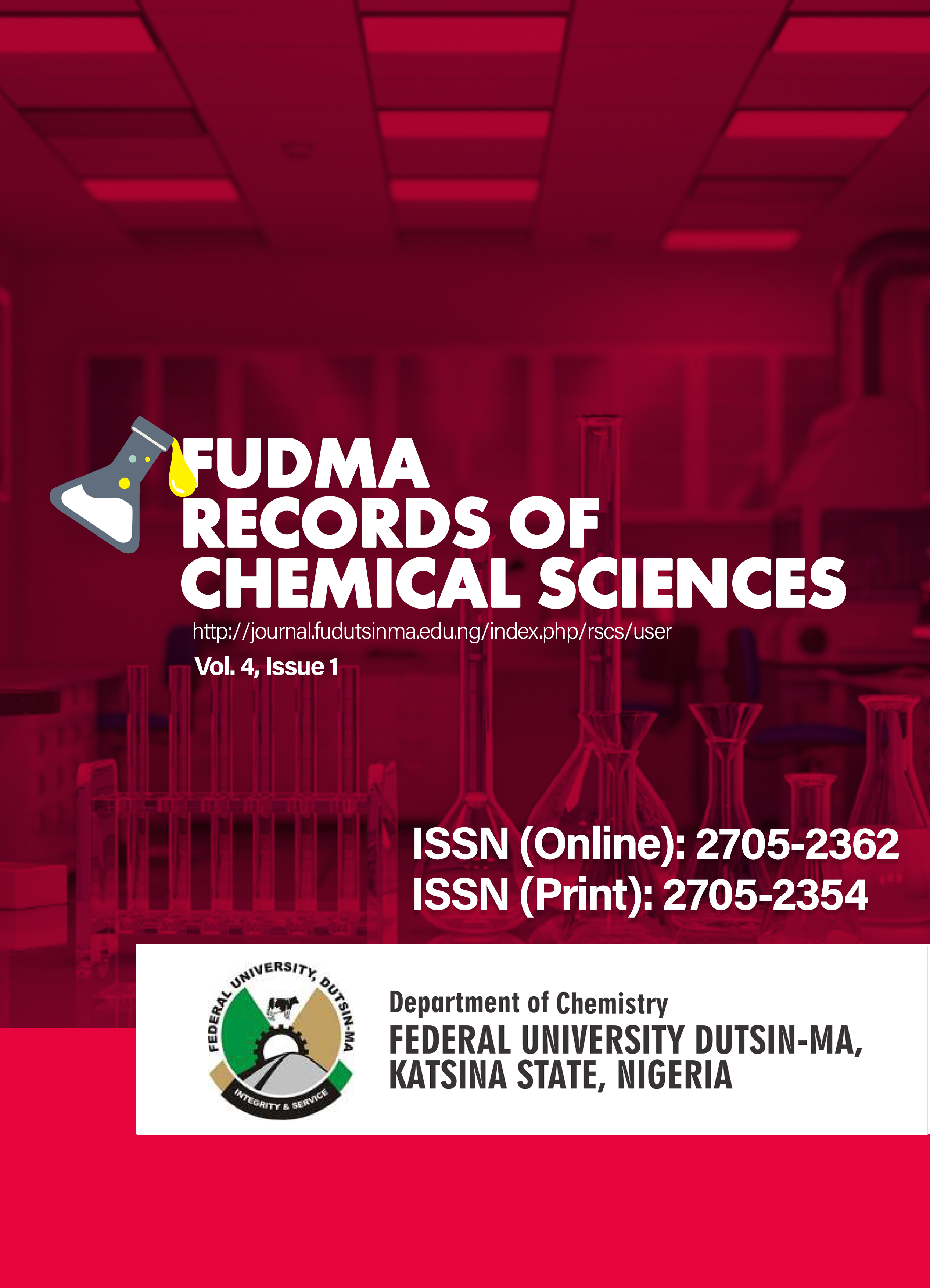Production of Biofuel as an Alternative Future Fuel from Bigpod Sesbania using Magnetics Sand/ Mgo Catalyst
DOI:
https://doi.org/10.33003/frscs_2025_0401/06Keywords:
MgO, Magnetic sand, Bigpod sesbaniaAbstract
Biofuel is a renewable, green alternative fuel that can be manufactured from vegetable oils, animal fats,
or recycled greases. Fourier-transform infrared (FTIR) spectroscopy is a crucial analytical technique for
identifying functional groups in biodiesel, confirming its composition and quality. Figure 1 shows the
FTIR spectrum of biodiesel derived from Bigpod Sesbania using magnetic sand and MgO as
heterogeneous catalysts which reveals characteristic peaks corresponding to key molecular structures.
The HPLC-MS analysis of biodiesel produced from Bigpod Sesbania revealed the presence of several
key fatty acid methyl esters (FAMEs), hydrocarbons, and alcohols. The primary methyl esters
identified, such as methyl palmitate, methyl stearate, and methyl oleate, are well-known biodiesel
components, confirming the successful transesterification of Bigpod Sesbania oil into biodiesel. The
Physicochemical analysis of the Sesbania herbacea seed oil revealed that ash content of 2.2, specific
gravity of 1.1, moisture content of 6.2, Acid value of 5.2, free fatty acid, 3.2 viscosity of 37 and pH
value of 6, the XRD spectrum of MgO have the main peaks 2θ= 28º that the powder is crystalline and
their crystalline was shown at 2θ = 30.3º, 30.6º, 40º, 50º,47º, 49º and 59º their diffraction peaks was
shown at 2θ= 41º presented. The results of magnesium oxide catalyzed Sesbania herbacea methyl ester,
magnetic sand catalyzed Sesbania herbacea Methyl ester of biodiesel quality parameters Table 4.2
shows the physical characteristic of biodiesels about to a known standard. From the table, the pour
points 2, 2, and cloud point 6,5 and flash points 130,132, viscosity 5.2, 4.6 and pH values 6.3, 6.72.






